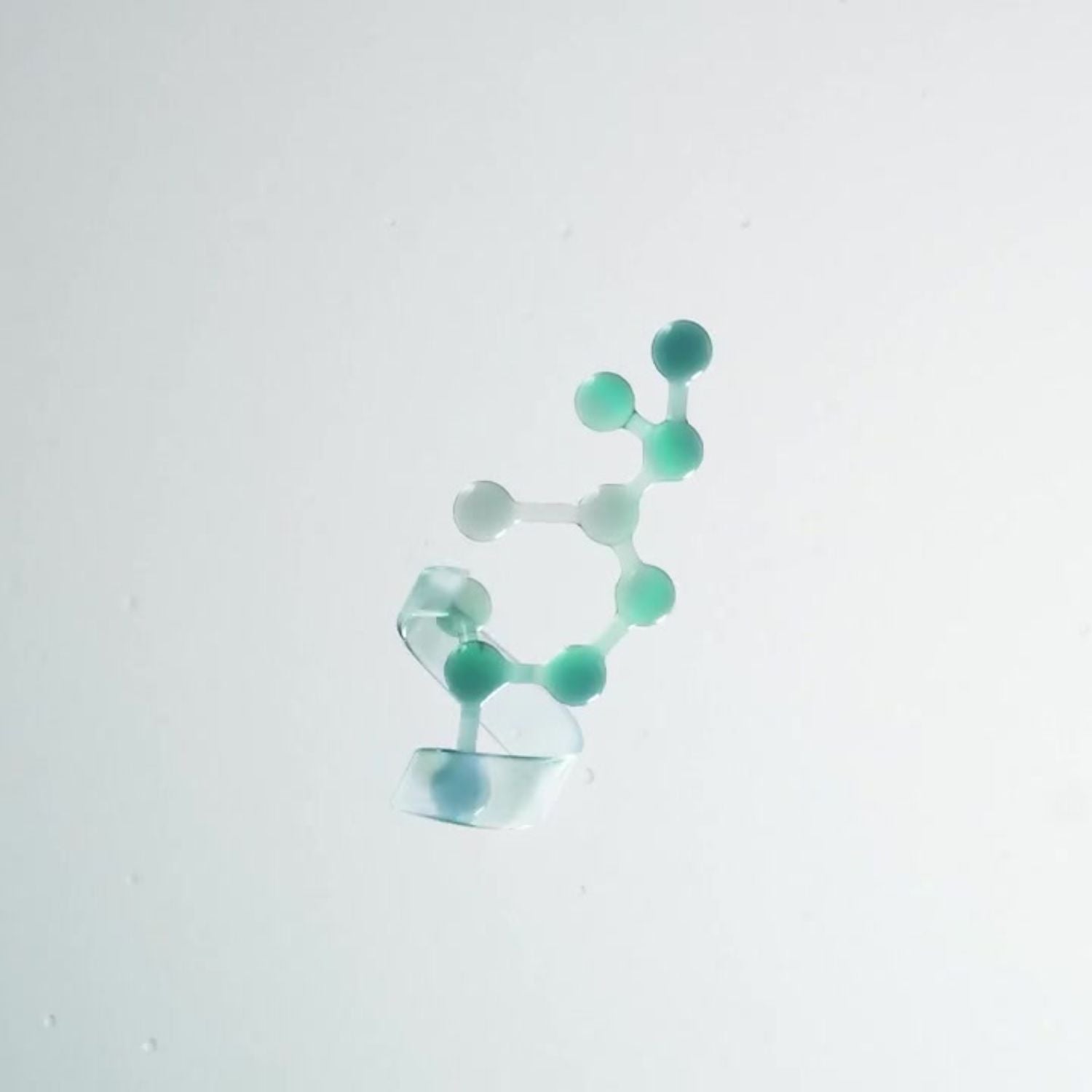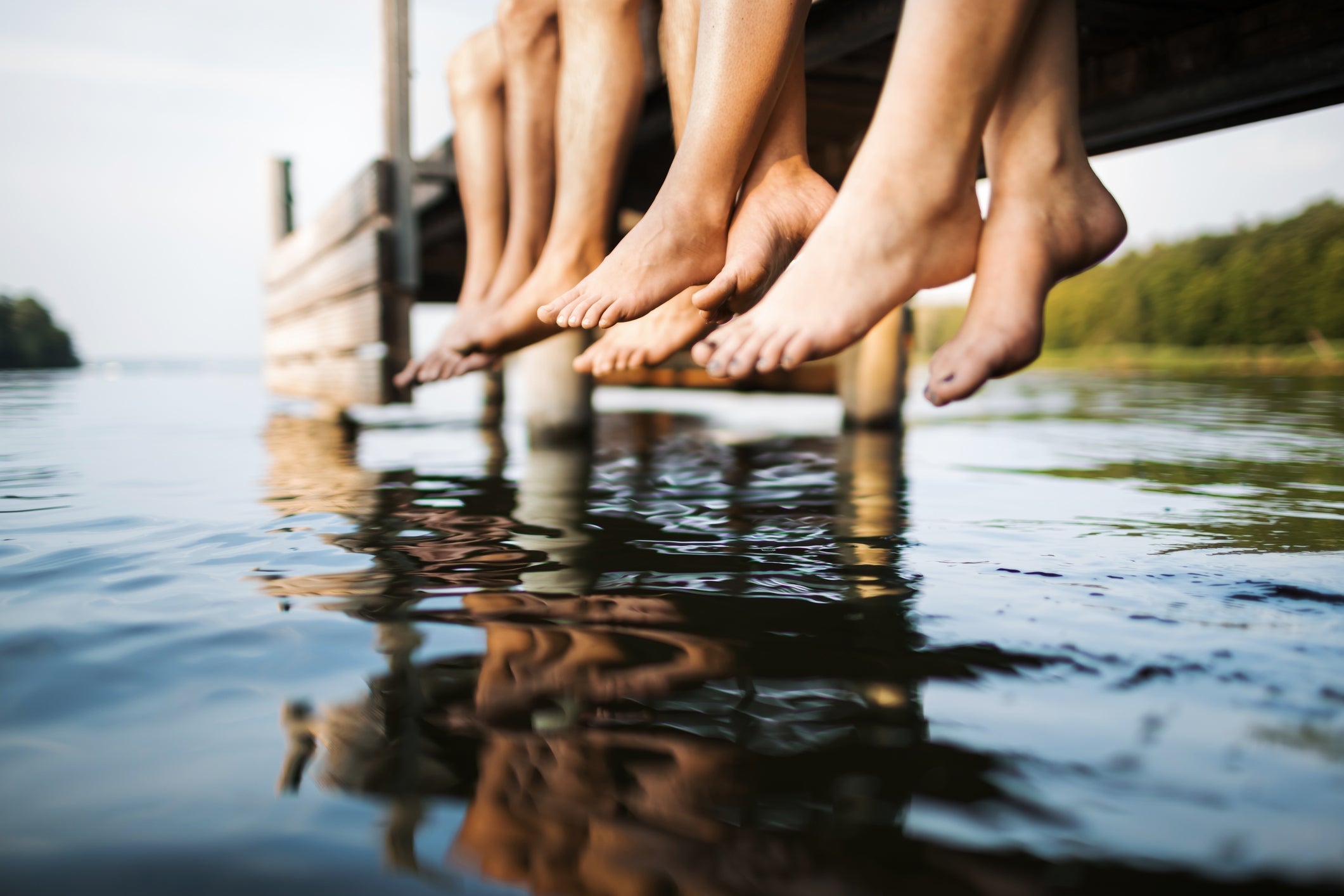Your feet have been through a lot. They carry you through workouts, errands, long days at work, and let’s not even talk about dancing in heels. However, while skin care routines are often packed with face serums and eye creams, your feet rarely get the attention they deserve, especially when it comes to how they age. They wrinkle, burn, thin out, and get that dry, crepey look.
Sound familiar? Then this guide’s for you. Let's walk through the main culprits behind foot skin aging and explore five simple yet effective ways to keep your feet looking and feeling their best. After all they do for you, they’ve earned it.
What Causes Feet to Age
Aging of the skin on your feet is the result of both environmental exposure and biological changes that occur over time. Here are the main contributors:
- Sun Exposure: The tops of your feet are often exposed in sandals or at the beach, and most people forget to apply sunscreen here. As a result, UV rays break down collagen, trigger pigmentation, and accelerate the development of wrinkles.[1]
- Dryness: Dry skin isn't just a cosmetic issue. Dry skin may be more prone to aging by contributing to a proinflammatory environment.[2] Whether from not drinking enough water to hydrate your skin or not moisturizing properly, dry skin can lead to tightness and make signs of aging, such as fine lines and cracks, appear more prominently on your feet.[3]
- Mechanical Stress: The constant pressure from walking, running, or wearing tight shoes creates friction on the feet that can degrade collagen, thicken calluses, and create uneven skin texture.[4]
- Reduced Circulation: Blood flow to the extremities slows down with age. Less circulation means your skin cells receive fewer nutrients and less oxygen, which impairs skin regenerative capacity. This often results in less healthy, thinner skin.[5]
How Does Foot Skin Age
The skin on your feet has a complicated task. It must be both thick enough to resist the mechanical stress applied to it by standing and walking, while remaining malleable enough to move and flex during movement. To achieve this dual function, your skin varies in thickness drastically. While this is important, it also changes how these areas age.
The skin on the top of your feet, also known as the dorsal surface, is thinner and more sensitive than the soles of the feet. Skin thins with age, making this area more prone to dryness, irritation, and sunburn. This is exacerbated by a lower density of sweat and sebaceous glands, which can cause the top of the feet to lose moisture quickly and dry out. Additionally, because this area is more exposed than the soles, damage from UV rays and pollutants can more easily accelerate signs of skin aging. These factors contribute to increased signs of aging and photodamage, such as wrinkles or hyperpigmentation, on the tops of your feet.[6]
In contrast, the skin on the bottom of your feet, or the plantar surface, is considerably thicker and tougher. It contains a higher concentration of sweat glands, helping to moisturize and lubricate the skin. This thicker, more durable skin helps protect your feet from the stress of walking and standing. However, the productivity of these sweat and sebaceous glands declines with age, contributing to dryness, roughness, and cracks if not properly cared for.[3,6]
In addition to the skin cells on the surface of your feet, a layer of subdermal fat and muscle pads across the feet helps cushion and protect the feet from pressure. This layer begins to thin as you age, causing some discomfort when walking, and contributing to sagging skin that is more prone to developing wrinkles.[7]
What Are Some Strategies for Preventing Wrinkles on Your Feet?
Managing foot wrinkles means supporting your skin's collagen production and hydration, two factors that can help prevent the development of wrinkles and minimize their appearance. Here are some science-backed strategies to help:
#1 UV Protection
Before you step out into the sun, make sure to wash and dry your feet so you can remove any sweat or dirt. Then, apply a broad-spectrum sunscreen with SPF 30 or higher. Don’t forget that the sides of your feet, toes, and ankles all need protection too. And remember to reapply every two hours, or more often if you’re swimming or sweating. Or, opt for closed-toe shoes when the UV index is high.
Going swimming or exercising in the sun? We recommend choosing a water-resistant option that won't become compromised by water or sweat like OS-01 BODY SPF. Plus, its peptide and antioxidant-powered formula helps target any low-level sun damage that might slip through.
#2 Nutrition for Skin Health
Nutrition is essential for maintaining healthy skin and fighting wrinkles, and this applies to your feet, too. A diet rich in antioxidants, vitamins, and minerals helps repair skin and supports collagen production, which is key for preventing and managing wrinkles.
Here’s what you need:
- Omega-3 fatty acids found in fish are highly bioavailable, meaning your body absorbs them quickly to help reduce skin inflammation and keep it hydrated.[8]
- Vitamin A is essential for skin regeneration and elasticity. Carrots provide a great source of this vital nutrient.[8]
- Vitamin E, found in healthy fats like avocados, is a powerful antioxidant that helps protect skin cells from free radicals and maintain skin softness.[8]
- Zinc is necessary for collagen synthesis, and it helps keep skin firm and youthful. Nuts and seeds are some of the most bioavailable sources of zinc.[9]
While diet is essential for maintaining the appearance of your skin, your body can’t send these nutrients specifically to your skin or your feet. At the same time, unless you are already deficient in any of these nutrients, you likely won't experience significant changes in your foot skin. That's why we recommend pairing a balanced diet with topical supplements like OS-01 BODY to give your feet a targeted boost of barrier support and hydration. Designed to treat some of the driest skin on your body, OS-01 BODY is clinically validated to improve skin hydration by up to +38.5%.[10]
#3 Foot Massage and Exercise for Dermal Elasticity
Periodic foot massages and consistent exercise can contribute to dermal elasticity, promoting healthier and more supple foot skin. Regular foot massages stimulate blood circulation, which helps deliver essential nutrients and oxygen to the skin cells. It can also aid in the removal of toxins and waste products, enhancing the overall health of the skin. Additionally, a massage can relax the muscles and tissues, reducing tension and promoting flexibility.
Exercise, such as stretching and strengthening exercises for the feet, can improve muscle tone, boost micro-circulation (blood flow), and support the skin's structure. For example, a 2020 study published in the Journal of Aging Research found that exercise can improve epithelial (skin) function.[11] Combining foot massage with exercises that target the feet can help maintain dermal elasticity and promote healthier skin.[12] Plus, by protecting against age-related muscle loss, exercise can help mask some of the loss of volume under skin that can contribute to sagging and wrinkles.
#4 Exfoliation and Foot Skin Renewal
Exfoliation and foot skin renewal are proven methods for maintaining youthful, wrinkle-free feet. Regular exfoliation removes dead skin cells, encourages cell turnover, and promotes the emergence of fresh skin. This process also stimulates collagen production, enhancing skin elasticity and helping to reduce the appearance of wrinkles.
To exfoliate effectively, use a gentle foot scrub or exfoliating tool, paying extra attention to areas like the heels and balls of the feet, which are more prone to dryness and wrinkles. Once you’re done, make sure to hydrate your feet with a formula like OS-01 BODY that helps restore the weakened skin barrier.[10]
#5 Hydration and Moisture
Skin drying out can exacerbate forms of age-related skin decline, especially on the feet. Dry feet can become hard, cracked, and uncomfortable. Support the skin on your feet by hydrating your cells from within and topically. Skin hydration starts within your body. Make sure that you drink enough water, especially during the hottest months of the year, to ensure that your cells stay plump and healthy.[13]
Skin constantly loses moisture, however. That's why you need to bolster your skin's defense against moisture loss with your skin care products. We love OS-01 BODY for this since it delivers lasting hydration by improving skin barrier function by up to +41.5%. This means that your feet get thoroughly hydrated and stay that way for longer.[10]
Key Takeaways:
- Foot aging is complex: the thinner skin on top is prone to wrinkles, while the soles need support against cracking and stress.
- Wrinkle prevention starts with protection; cover your feet with SPF just like you would your face.
- Eat foods rich in omega-3s, zinc, and vitamins A and E to support your skin’s structure from within.
- Regular foot exercises and massages can improve muscle tone, circulation, and help prevent sagging or wrinkling from volume loss.
- Remove dead skin with gentle exfoliation to reveal softer, fresher skin and stimulate new cell growth.
- Use a product that strengthens the skin barrier and deeply hydrates to reduce the appearance of wrinkles and minimise crepiness and fine lines.
References
- https://pmc.ncbi.nlm.nih.gov/articles/PMC4292080/
- https://pubmed.ncbi.nlm.nih.gov/28115059/
- https://pmc.ncbi.nlm.nih.gov/articles/PMC10206231/
- https://pubmed.ncbi.nlm.nih.gov/12074526/
- https://pmc.ncbi.nlm.nih.gov/articles/PMC3228253/
- https://www.ncbi.nlm.nih.gov/books/NBK482278/
- https://www.sciencedirect.com/science/article/abs/pii/S0268003310001014
- https://pmc.ncbi.nlm.nih.gov/articles/PMC3583891/
- https://pmc.ncbi.nlm.nih.gov/articles/PMC7146365/
- Zonari, A., et al. Journal of Cosmetic Dermatology, 2025
- https://www.ncbi.nlm.nih.gov/pmc/articles/PMC7199599/
- https://www.ncbi.nlm.nih.gov/pmc/articles/PMC4720453/
- https://pmc.ncbi.nlm.nih.gov/articles/PMC4529263/



